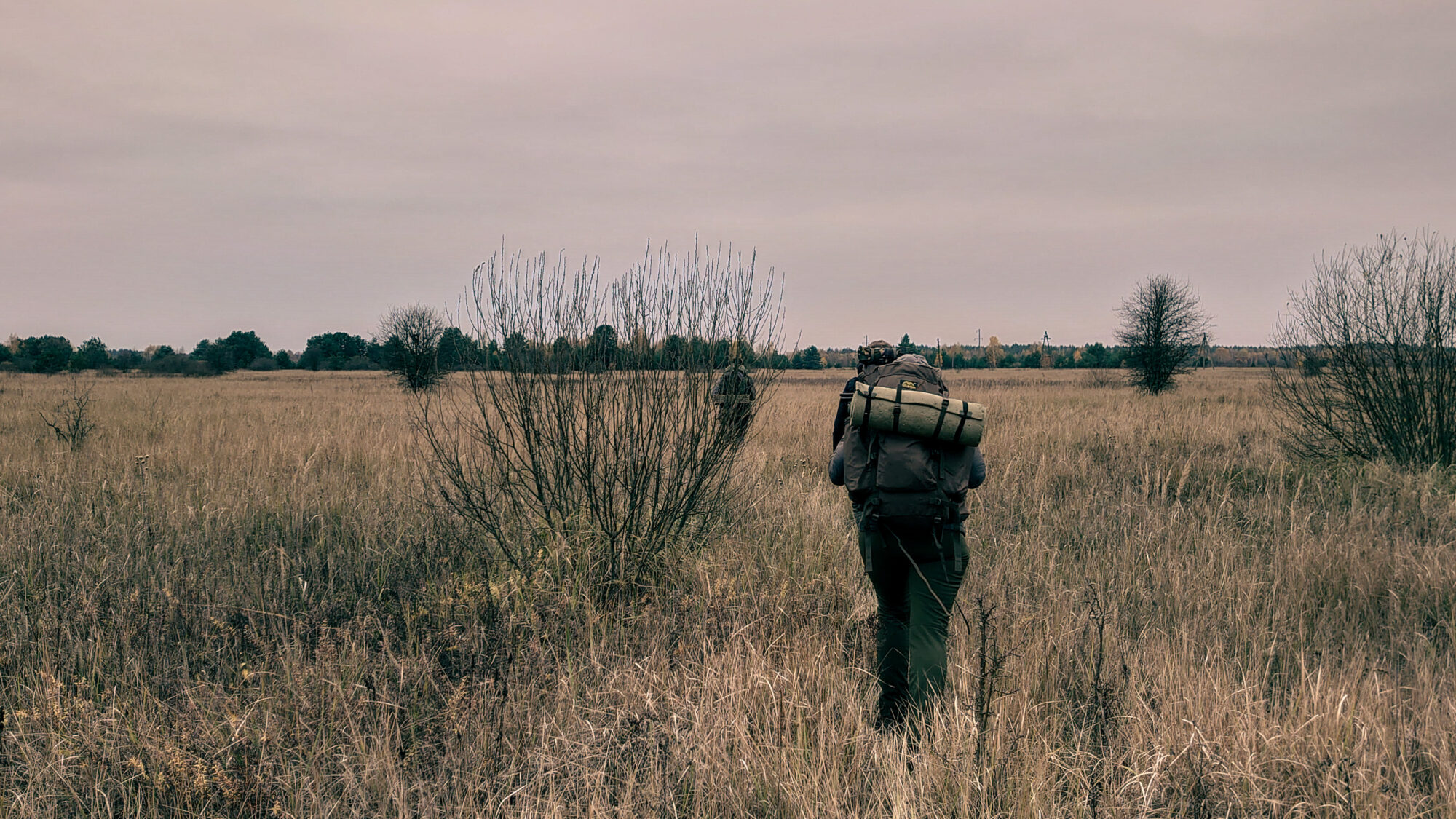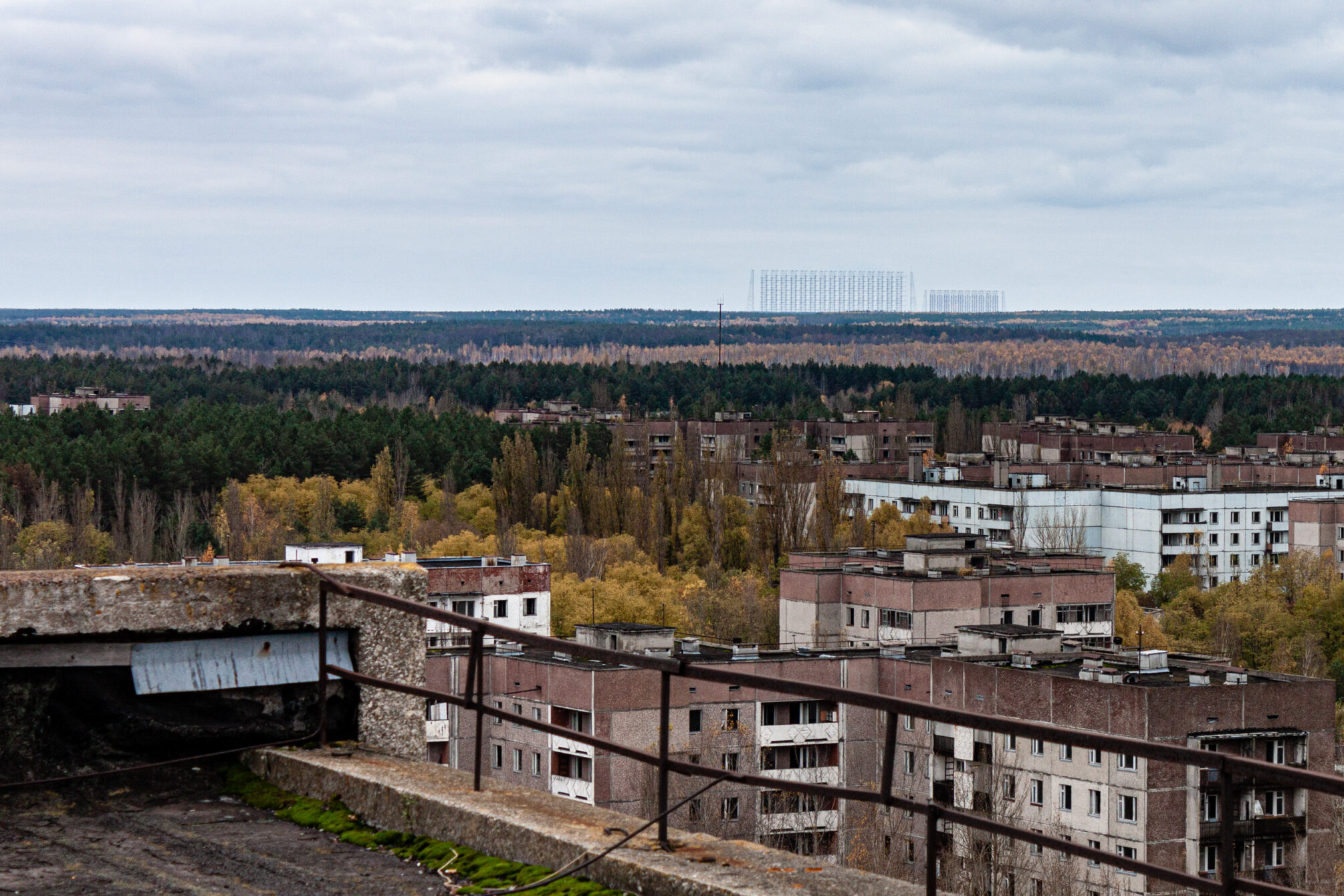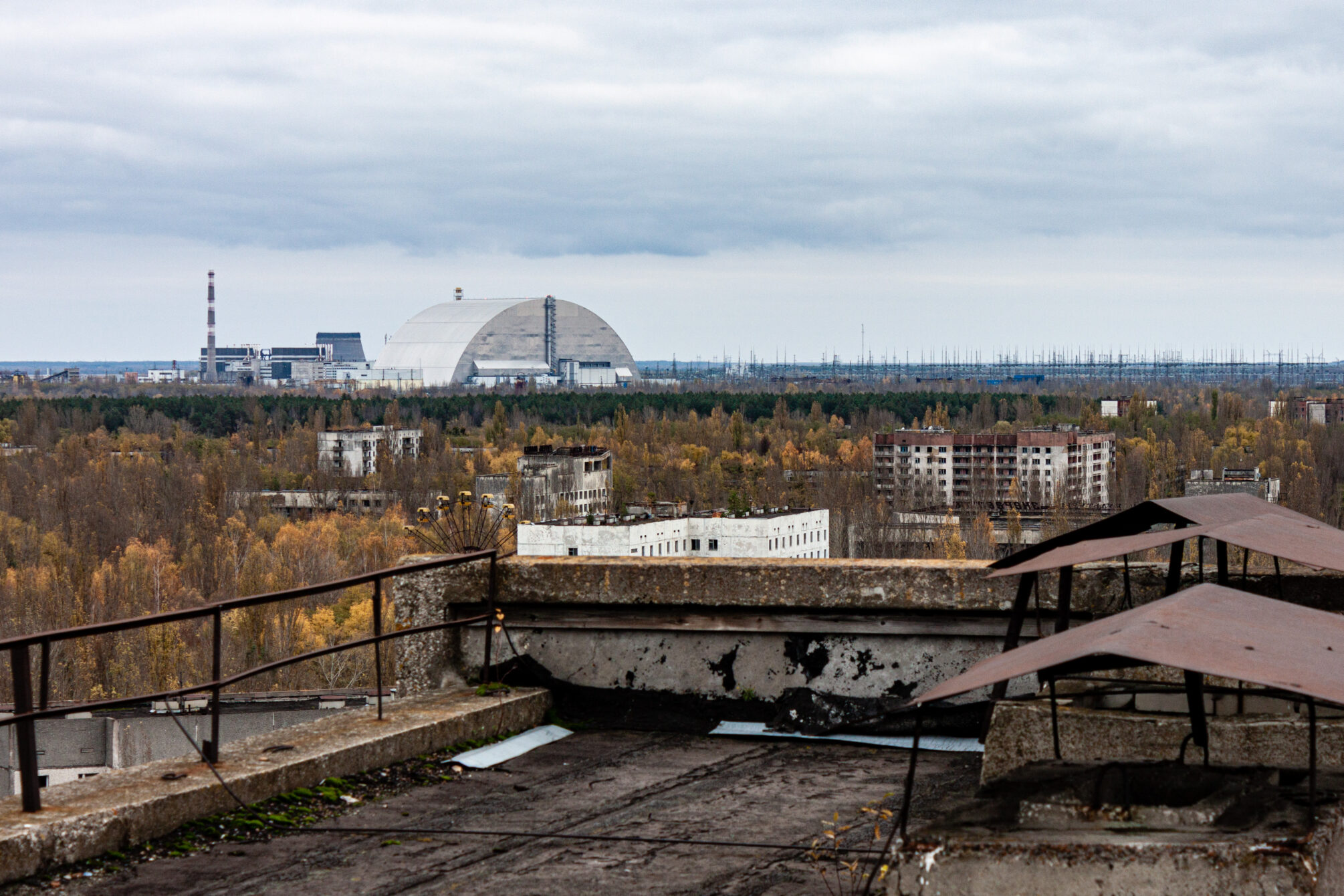After visiting the Duga radar and control facility, we were going to explore the abandonded Zamoshna village. Because we got up very early in the morning to seize the early dusk hours, we were pretty hungry by now. Next step was to have breakfast. So we looked for the ruins of an old building to be less visible and audible. This house was built as a shelter by and for the workers that constructed the Duga radar back in the days.
On the way to the village, we had to avoid wood workers, that were passing by regularly in Kamaz trucks to haul trees away. We had to walk abroad through the thicket, which was pretty exhausting. This part of the forest burned in the spring 2020 fires. That’s why we had to climb over fallen trees, and had only charred trees as cover, which slowed us down significantly.

Exploring the Zamoshna (Замошна) village
We arrived at our last point of interest. It is a really small village near the border of the exclusion zone. It is quite popular among stalkers to take a break here. Especially the construction trailer can be seen often in YouTube videos. And in those it was often really messy. I was pleased to see, that someone did clean up a bit, though. By now, this trailer is well known – also to the authorities. So we were careful as always.

Next to the trailer is an old church. Some priests still care about it to this day on a regular basis. The orthodox icons are in good shape and windows have been renewed with modern plastic ones. The rest of the church is not so well preserved. The roof collapsed, the wood banks and floor rotted away and there is nearly anything left than the bare walls.

Among the other structures is an elementary school and a few houses of families of different status / wealth. Our guide explained that wooden homes were often for the working class, while those built of bricks belonged to party officials or people of higher status.

Leaving the zone for good
The last bit of our trip was unspectacular. We walked the remaining kilometers to the Uzh river and crossed it. This time our pants remained dry, but we still hat to take off our trousers. The bad thing was, it was daytime. So we were a bit in a hurry. A bit too much. Koko did not have time to care for her blister-plagued foot properly. So she had to walk the last bit with a wet foot and sand in the boot. But finally we made it to the van that was already waiting to pick us up.
It was starting to get dark and we were so happy and relieved we made it. Every single one of my muscles was hurting. But I can call myself a real Stalker now. One, that made it through the zone completely undetected. Of course this is primarily achieved by our guide’s good planning, knowledge of the area, of the patrolling routes and his attention. He was really worth every cent and became a good friend we were lucky to have around. Of course we opted for an adequate tip later.
We went to an Ukrainian restaurant – as stinky as we were, had a gorgeous traditional diner and fell asleep on the way back to the hostel in Kyiv.
Was it really dangerous?
Well: yes and no – but for different reasons you might think – if you did not read the full series. You should!
Encountering wild animals is always risky – and even more dangerous if they are protecting their breed. Exploring abandoned houses and structures is also risky to varying extent – depending on the state of decay.
But the amounts of radiation we absorbed really wasn’t that high. Here is a „full“ log of my Geiger counter that I wore always on my body. I didn’t hunt for hotspots to measure the highest radiation, though – on purpose. I turned it off when we slept, The sleeping places had very low background radiation – even lower than Kyiv itself. Usually around 0.07 µS/h. I wasn’t sure, if the 1MB flash memory would be sufficient to save values every second for 3 full days straight. In retrospective it should have been enough, but I didn’t want to lose important data.
The relevant one is the blue graph – that’s CPM (clicks per minute) that the geigerlog software converted to µS/h. The highest value I encountered was 6.4 µS/h, the highest value we saw, was under the tree at Bjarke’s balls (~20 µS/h). So the total absorbed (beta + gamma) radiation dose was only slightly higher than the one we got from the flights to and from the Ukraine.
If you missed it, read the last article where we explored the Duga radar. This article concludes the Chernobyl series for now, it got way longer than I anticipated, but feedback of some readers encouraged me to keep of the level of detail. I will publish my photo albums to my photo gallery in the coming one or two weeks and link it here, when time has come.
















Sehr, sehr schöne Berichte – Super!!
Ich werde im April eine Hiking-Tour machen.
Danke für diese wunderschön geschriebene Erfahrung. Dadurch kann ich mir das außergewöhnliche Erlebnis immer wieder ansehen, mich in diese Situationen zurückversetzen und Eindrücke und Gefühle neu abrufen. Es war einfach großartig. Ich bin so froh, dass wir das gemacht haben.
Und danke, dass du so idiotischen Mist so spontan mitmachst!